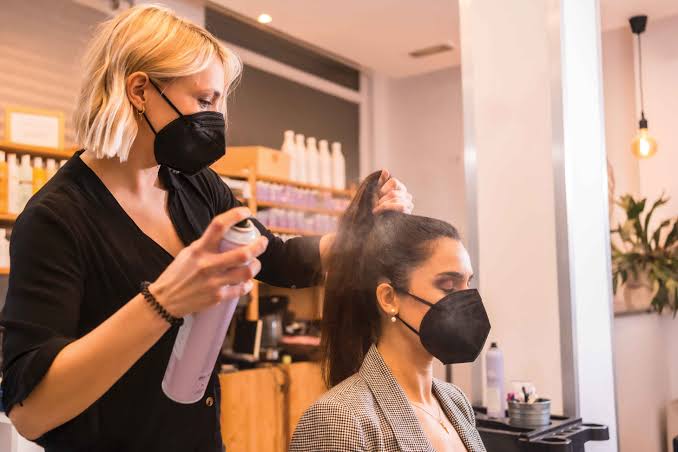Hair salons are not just businesses where one can go for a haircut or colour change. They are places of luxury where customers can come to be spoilt, to be pampered, and to leave feeling beautiful. However, making a salon stand out and become unique is not limited to providing the latest trends and the best products. The stylist’s and client’s health and safety should always come first. This reduces the possibility of catching an infection while at the same time creating an environment that is relaxing through a clean environment. This is a comprehensive guide on maintaining healthcare settings in your hair salon to ensure that everyone who walks into the facility is safe.
Handwashing: The Key to Cleanliness in Salons
Frequent Washing: It is recommended that hand washing should be done by the stylists as frequently as possible within the working period. Use clean water and soap to wash the hands for at least 20 seconds before and after each client, during the transition from one service to another (colouring, cutting, styling), after using the washroom, blowing the nose, coughing or sneezing, and after touching any potentially contaminated surface.
Technique Matters: The water should be warm enough for soap to create a lot of lather. All parts of the hands should be washed, including the palm, back of the hands, wrists, between fingers and under the nails. Wash for at least twenty seconds, which may seem like a long time. Sing the ‘Happy Birthday’ song twice to help you measure the time more accurately.
Accessible Stations: Handwashing sinks with soap and disposable paper towels should be easily accessible in the salon, especially around hair styling stations, shampoo bowls, and the break area. Remind stylists to wash their hands when they start work and when they come back from a break or after doing any other task.
Alcohol-Based Sanitizer (Optional): Use hand sanitizers with at least 60 percent alcohol for extra cleaning, especially when soap and water are unavailable, like between services when working on the salon floor.
Tool Disinfection: A Clear Vision
Disinfecting Combs, Brushes & Scissors: Sanitize combs, brushes, scissors, and other non-disposable accessories for each client using a hospital-grade disinfectant as the manufacturer recommends. The areas most likely to harbour bacteria should be cleaned frequently, especially the brushes and combs’ teeth, which directly touch the scalp and hair. It is also important to let the tools dry before reusing because moisture is a breeding ground for bacteria. This is one of the major step in healthcare setting.
Consider Disinfection Pouches: Buy disinfectant wipes or pouches made for salon tools to help you clean your tools effectively. These wipes are impregnated with a disinfectant solution that kills many bacteria and viruses on contact.
Double Dunking is a No-No: It is also important not to re-dip combs or brushes in styling products during service. This makes it possible for products to be contaminated and transfer bacteria from one client to the other. If you use a comb or brush on different clients, use a new comb/brush on the next client or wash it properly before using it on the next client.
Sharps Safety: Discard the used razors and blades in the sharps containers to avoid injuries to other people or yourself. Sharps containers are specially made to contain sharp objects in a manner that is safe for individuals handling them.
Electrical Tools: Clean electrical tools such as clippers and trimmers according to the manufacturer’s instructions. Some tools may need to be wiped down with disinfectant wipes or solutions, while others may simply need to be brushed off with hair. Electrical tools should not be immersed in water, as this will damage them.
Salon Environment
To maintain the freshness of the product, it is essential to keep the product fresh.
Ventilation: Always ensure that there is an adequate flow of fresh air in the salon to reduce the concentration of chemical fumes and minimize particle circulation. Use cross ventilation as much as possible and air cleaners if necessary.
Regular Cleaning: Ensure that the salon is clean and well-arranged. Clean the floor with a broom and mop, and frequently dust all the furniture and other fixtures.
Waste Disposal: Wash and sanitize wastepaper baskets as often as possible. Ensure that all used chemicals and other hazardous materials are disposed of according to the region’s laws.
Employee Wellness: Safety is a critical factor that defines the health of a team.
Vaccinations: Remind the stylists to get vaccinated and ensure that they have up-to-date vaccination records, especially for flu and Hepatitis B.
Sick Leave Policy: To ensure that stylists do not attend work when they are ill, establish a proper sick policy to follow.
Personal Hygiene: Ensure all staff observe proper hygiene standards such as washing hands, having neat hair and clothing, and other hygiene practices in healthcare settings.
Training and Communication
Regular Training: Ensure the stylists receive refresher courses on infection control measures, cleaning and disinfection practices, and upholding hygiene standards.
Safety Data Sheets (SDS): Ensure that you have SDS for all the chemicals used in the salon and they are easily accessible.
Open Communication: Promote communication and interaction amongst staff. Employees who work as stylists should be free to report any safety issues or possible risks.
Cleaning and proper hygiene in your hair salon are not a mere issue of cleanliness but a matter of health. These steps will help you ensure that your business environment is safe and friendly for your clients and staff, which will help the business grow and and make a better healthcare setting.






